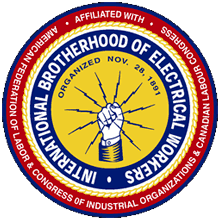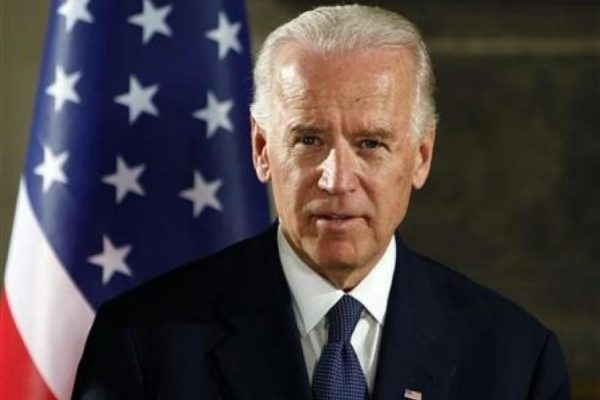The State of Public Education in New York State
September 18, 2012
By Carl Korn , NYSUT, 9/4/2012
Reprinted By LaborPress, 9/18/2012
As college campuses bustle to life and nearly 2.7 million students begin another school year, it’s a fair question to ask.
A growing collection of new research shows that New York’s public education system is making significant unprecedented progress — success that deserves to be recognized even as we tackle the challenges ahead.
A months-long analysis of student achievement by NYSUT researchers—documented in “Taking Stock: A Progress Report on Public Education in New York State” —shows educational success is significantly deeper and far more widespread than has been acknowledged by critics.
However, the gains New York’s public education system made over the last two decades in graduation rates, Regents Diplomas, college readiness and enrollment, and teacher quality are now very much at risk. As the 2012-13 school year opens, the state’s 697 school districts are operating with $1.1 billion less in state aid than at the start of 2008-09. That translates into cuts in courses, programs and activities for students and some 35,000 fewer teachers and school-related professionals.
State support for public higher education—SUNY, CUNY and community colleges—has been cut by $1.7 billion since 2008 through 2009.
Meanwhile, the property tax cap enacted in 2011 is undemocratically restraining local communities’ ability to fund programs essential to continued student success.
Still, students, educators and community members deserve the opportunity to take stock of and recognize significant progress in public education. That does not mean ignoring the very real needs of students who are not yet achieving at a level necessary for success in school and in life.
No one knows better than those engaged in education how significant the challenges are, and how urgently achievement gaps must be addressed to further improve public education at all levels and for all students. Too often, public discourse about education fails to start with the facts. Conversations about strengthening public education must continue with an objective and more balanced view of educational achievement — a view that acknowledges success in order to build on it. The following is excerpted from the report’s findings. The complete report is available at www.nysut.org.
Graduation rates soaring
In 1999, New York’s graduation rate was calculated at 58.5 percent, a level that put the state near the bottom nationally. Over the next decade, however, New York’s graduation rate soared, despite higher academic standards, more rigorous tests and much tougher Regents graduation requirements — climbing 19.9 points to 78.4 percent, second in growth only to Arizona among the 50 states and the District of Columbia.
State Education Department graduation data shows that over a seven-year period from June 2004 to June 2011, 255 of the 637 school districts with high schools increased their graduation rates, many by double-digits.
More Regents Diplomas
In 1988-89, just 35 percent of New York students earned Regents Diplomas. Through the Regents Action Plan and other reforms over the next two decades, the number of students earning this diploma has been steadily rising. In June 2011, 66.7 percent of graduates earned a Regents Diploma. SED data shows 87 school districts had at least 90 percent of their graduates earn a Regents Diploma, compared to 36 districts in June 2004. Even more promising is the fact that 141 school districts experienced at least a 20-percentage point gain in the number of graduates earning Regents Diplomas over that seven-year period.
New York nationally recognized
In its Jan. 12, 2012 report, “Quality Counts,” Education Week ranked New York’s overall public education system third in the nation — behind only Maryland and Massachusetts — based on its cumulative score on six broad measures.
New York’s score of 83.9 points put it well ahead of the national average of 76.5.
Newsweek, in its May 2012 report on America’s Best Public High Schools, ranked 118 public high schools in New York among the top 1,000 in the nation. Only California, with 6.21 million students compared to New York’s 2.7 million, had more public high schools (138) in the top 1,000. City Honors in Buffalo was rated the No. 1 public high school in the Northeast and No. 11 in the United States based on a number of measures, including SAT and ACT scores, AP exam scores, graduation rates and the percentage of graduates enrolling in college. In all, New York placed six public high schools among the top 10 in the Northeast. Joining City Honors was Bronxville HS (No. 4); Jericho HS (No. 5); Hunter College HS (No. 6); Bronx HS of Science (No. 9) and Locust Valley HS (No. 10).
U.S. News and World Report, in its annual report, awarded 68 New York high schools “gold medals,” based on their ability to help students surpass state proficiency standards, how well they prepare students for college and other factors.
National leader in AP exams
New York ranked second in the nation in 2011 with 26.5 percent of its high school graduates participating in the College Board’s Advanced Placement courses and scoring at least a 3 on an AP exam.
Significantly, New York state is taking the lead in improving AP participation by under-represented students. The number of African-American and Latino students taking AP exams exploded, rising from 16,968 in 2002 to 38,216 in 2011.
Over the past 10 years, the number of New York students taking AP exams more than doubled. In May 2002, 84,536 New York high school students took 142,083 college-level AP exams. A decade later, the number of New York students taking college courses while in high school hit an impressive 188,871 students taking 228,147 exams.
Teachers among most educated
New York is one of just 12 states to require teachers to hold a master’s degree to become certified, and many teachers go well beyond that minimum requirement.
Nearly 40 percent of the state’s teachers have earned at least 30 graduate credits beyond the required master’s degree or a doctorate.
New York’s teachers stand out by achieving national certification from the National Board for Professional Teaching Standards, considered the “gold standard” of the teaching profession.
In 2000, 104 New York teachers achieved national certification. Today, however, with 165 New York teachers achieving “master teacher” status in November 2011, New York has 1,302 nationally certified teachers—11th highest in the nation.
Moreover, most of these highly accomplished teachers are working with New York’s neediest students. As of August, 97 percent of the state’s nationally certified teachers reported working in a Title I eligible school, or a school where at least 40 percent of the students are eligible for a free- or reduced-price lunch.
More students in college
In 1980, just 63 percent of New York’s public school graduates entered college. More than 30 years later, the number of graduating high school students enrolling in two- or four-year colleges hit 81 percent.
With better than four of every five high school graduates enrolling in college, New York continues to have one of the nation’s most highly educated workforces. Indeed, New York has the fourth highest percentage of college degree-holders in the 25-34 age group in the nation.
New data from the 637 school districts with high schools shows that nearly 41 percent—or 264 school districts—increased their percentage of graduates enrolling in two- or four-year colleges.
The CNBC television network, in its 2012 special report, “America’s Top States for Business,” ranked New York’s education system No. 1 in the nation for meeting the needs of business.
Public higher ed among best
Forbes magazine recently ranked SUNY’s Binghamton University, University at Albany, Stony Brook University and the College of Environmental Science and Forestry among its “Best Buys” and “America’s Best Public Colleges.” U.S. News and World Report listed seven SUNY schools, including Geneseo, New
Paltz, Oneonta and Fredonia among “Best Regional Universities in the North.”
The Princeton Review ranked SUNY’s Albany, Binghamton, Stony Brook, Buffalo, Geneseo and Purchase campuses among its “Best Colleges,” and listed them along with SUNY Brockport, SUNY Oswego and SUNY Fredonia among its “Best Northeastern Colleges.”
Over the years, CUNY has increased its number of “high achievers” —students with high school grade point averages above 85, while earning accolades for granting degrees that deliver in the marketplace.
The Aspen Institute, as part of a study of community college excellence, placed six New York community colleges among the 120 best in the United States: Broome, CUNY Kingsborough, Finger Lakes, Genesee, Hudson Valley and Jefferson.



